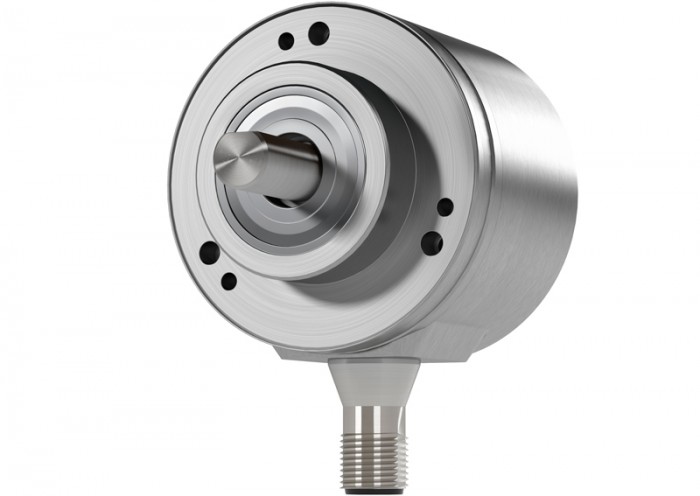Pepperl+Fuchs presents new magnetic absolute rotary encoders with 0.1° accuracy

Photo by Pepperl+Fuchs GmbH
Pepperl+Fuchs has created a new breakthrough in rotary encoder technology with the new magnetic absolute rotary encoders in the 0.1° accuracy class. Their outstanding performance in terms of precision and dynamics, combined with extreme robustness in compact designs, offers significant advantages in virtually all areas of machinery and plant engineering to offshore equipment and mobile equipment applications.
Rotary encoders that use the magnetic detection principle are particularly robust and compact based on the technology they use. In heavy-duty applications and environmental conditions, the encoders are unaffected by contamination by dust, oils, aggressive emulsions, or influences such as extreme temperatures, vibration, impact, shock etc. In the new 0.1° accuracy class magnetic absolute rotary encoders, Pepperl+Fuchs combines these properties with a high level of precision and dynamics. The encoders exhibit measurement accuracies of up to 0.08° at a singleturn resolution of up to 16 Bit, a multiturn resolution of up to 39 Bit, and dynamics that, in relation to the sampling time of <80 µs, push the boundaries of what has previously been possible.
“This outstanding performance meets market requirements arising from more challenging environmental conditions with ever faster processes and growing demands on process reliability,” explains Stefan Horvatic, the responsible product manager at Pepperl+Fuchs Drehgeber GmbH. As typical examples, he mentions the existing traditional application fields for magnetic rotary encoders: mobile equipment, commercial vehicles, and wind turbines: “On the one hand, magnetic rotary encoders are perfect for increasingly challenging locations.
On the other hand, ever larger plants with longer axes and traverse distances make increased demands on accuracy,” says Horvatic. The robustness requirements arising from more demanding process conditions are increasing in other areas in which high accuracy is generally a main issue. One of these areas is in printing controllers in the printing industry, where different colors must be precisely positioned on top of each other to one hundredth of a millimeter. Horvatic describes similar configurations in material handling systems and robotics, which require particularly compact designs, in his experience. The new rotary encoder highlights satisfy these size requirements, with housings of just 58 millimeters in diameter in the standard version, or with compact housings, which are 36 millimeters in diameter.
For more information, please visit http://www.pepperl-fuchs.com.
News Categories
- » NEWS HOME
- » Automation & Robotics
- » Industry 4.0
- » Material Handling
- » Sensors
- » Quality & Testing
- » Machine Vision
- » Laser & Optics
- » Metalworking
- » Motion Control & Drives
- » Hydraulics & Pneumatics
- » Process Industry
- » Renewable Energy
- » Agriculture
- » Home & Office Furniture
- » Environmental Tech

